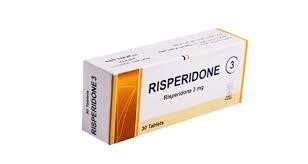A nurse has received change-of-shift report on four assigned clients. For which of the following clients should the nurse intervene to prevent a potential food and medication interaction?
A client who is receiving verapamil and has a continuous infusion of total parenteral nutrition (TPN)
A client who is taking phenytoin and is requesting a milkshake
A client who is receiving a diet high in potassium-rich foods and furosemide by mouth
A client who is receiving an MAOI and is requesting a cheeseburger for dinner
The Correct Answer is D
- A. This choice is incorrect because verapamil and TPN do not have a significant food and medication interaction. Verapamil is a calcium channel blocker that can lower blood pressure and heart rate, while TPN is a form of intravenous nutrition that provides calories, electrolytes, vitamins, and minerals. The nurse should monitor the client's vital signs and blood glucose levels, but there is no need to intervene to prevent an interaction.
- B. This choice is incorrect because phenytoin and milkshakes do not have a significant food and medication interaction. Phenytoin is an anticonvulsant that can decrease the absorption of some vitamins, such as folic acid and vitamin D, but milkshakes are not a major source of these nutrients. The nurse should encourage the client to eat a balanced diet and take supplements as prescribed, but there is no need to intervene to prevent an interaction.
- C. This choice is incorrect because potassium-rich foods and furosemide do not have a significant food and medication interaction. Furosemide is a loop diuretic that can cause hypokalemia, or low potassium levels, but potassium-rich foods can help prevent this complication. The nurse should monitor the client's electrolyte levels and fluid balance, but there is no need to intervene to prevent an interaction.
- D. This choice is correct because MAOIs and cheeseburgers have a significant food and medication interaction. MAOIs are antidepressants that can cause hypertensive crisis, or dangerously high blood pressure, if the client consumes foods that contain tyramine, such as aged cheeses, cured meats, fermented foods, and beer. The nurse should intervene to prevent the client from eating a cheeseburger and educate the client about avoiding tyramine-containing foods while taking MAOIs.
Nursing Test Bank
Naxlex Comprehensive Predictor Exams
Related Questions
Correct Answer is A
Explanation
Implement fall precautions for the client.
- A. Implement fall precautions for the client. This is correct because risperidone can cause orthostatic hypotension, which can increase the risk of falls and injuries. The nurse should advise the client to change positions slowly, avoid alcohol and dehydration, and use assistive devices as needed.
- B. Monitor the client's thyroid function. This is incorrect because risperidone does not affect thyroid function. The nurse should monitor the client's thyroid function if they are taking lithium, which can cause hypothyroidism.
- C. Place the client on a fluid restriction. This is incorrect because risperidone does not cause fluid retention or overload. The nurse should encourage adequate fluid intake and monitor the client's fluid balance.
- D. Discontinue the medication if hallucinations occur. This is incorrect because hallucinations are a symptom of schizophrenia, not a side effect of risperidone. The nurse should not discontinue the medication abruptly, as this can cause withdrawal symptoms and relapse of psychosis. The nurse should assess the client's response to the medication, report any adverse effects, and adjust the dosage as prescribed.

Correct Answer is A
Explanation
Choice A rationale:
The nurse should include the statement, "Use a product with DEET on your skin and clothes when you are walking in a wooded area," in the educational program on Lyme disease. DEET is a widely used insect repellent effective against ticks. It is recommended to prevent tick bites in wooded and grassy areas. The rationale behind this choice is to educate the public about practical measures to reduce the risk of Lyme disease. DEET repels ticks, reducing the chances of tick attachment and, consequently, the transmission of Lyme disease.
Choice B rationale:
The statement, "Symptoms of Lyme disease appear 2 days after being bitten by an infected tick," is incorrect. The incubation period for Lyme disease can vary from 3 to 30 days after the tick bite. Symptoms usually appear within 3 to 14 days but can take longer to manifest. Providing inaccurate information can lead to misunderstanding and inadequate preventive measures.
Choice C rationale:
The statement, "Remove embedded ticks by squeezing the body with tweezers," is incorrect. Improper removal of ticks, such as squeezing the body, can lead to the injection of tick fluids into the host, increasing the risk of disease transmission. The correct method for tick removal is to use fine-tipped tweezers to grasp the tick as close to the skin's surface as possible and pull upward with steady, even pressure. This helps ensure the tick is removed entirely and reduces the risk of infection.
Choice D rationale:
The statement, "If bitten by a tick, testing for Lyme disease should occur within 2 weeks," is incorrect. Testing for Lyme disease immediately after a tick bite is not recommended because it takes time for the body to produce antibodies detectable by the tests. Testing too early can yield false-negative results. Healthcare providers may recommend testing if symptoms develop, but waiting for a few weeks after the bite increases the accuracy of the test results.
Whether you are a student looking to ace your exams or a practicing nurse seeking to enhance your expertise , our nursing education contents will empower you with the confidence and competence to make a difference in the lives of patients and become a respected leader in the healthcare field.
Visit Naxlex, invest in your future and unlock endless possibilities with our unparalleled nursing education contents today
Report Wrong Answer on the Current Question
Do you disagree with the answer? If yes, what is your expected answer? Explain.
Kindly be descriptive with the issue you are facing.
